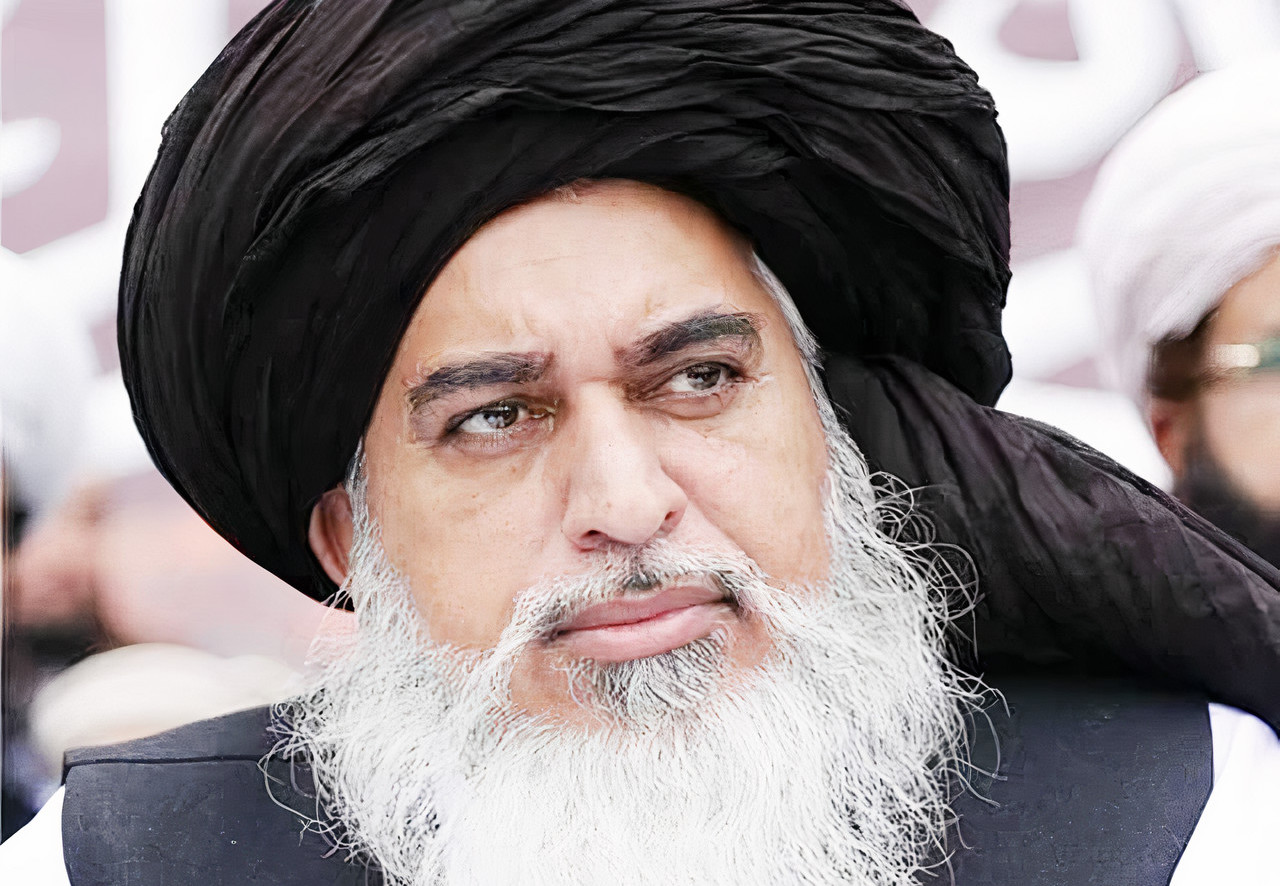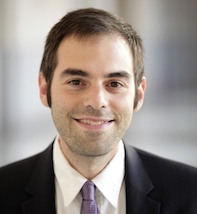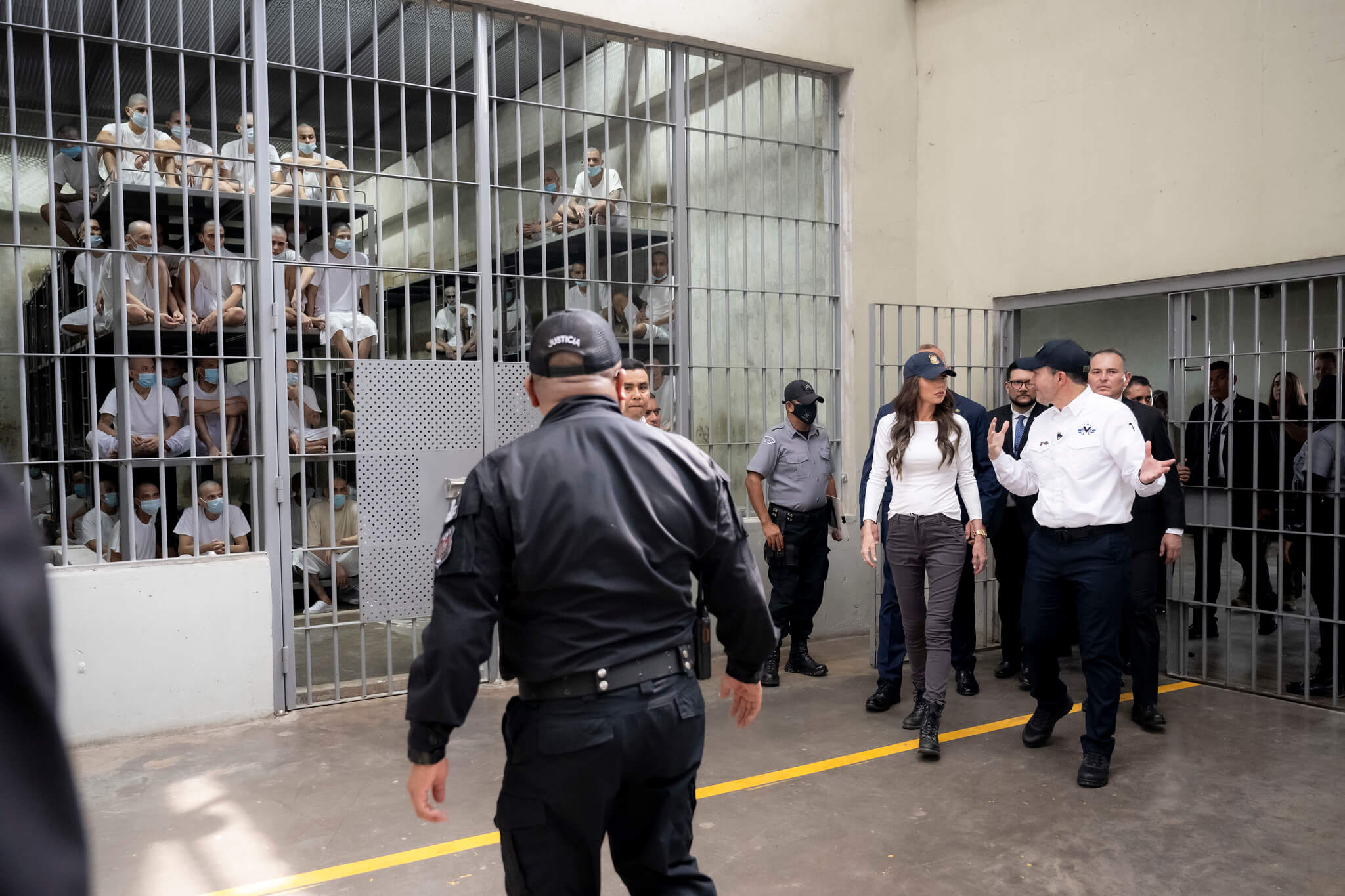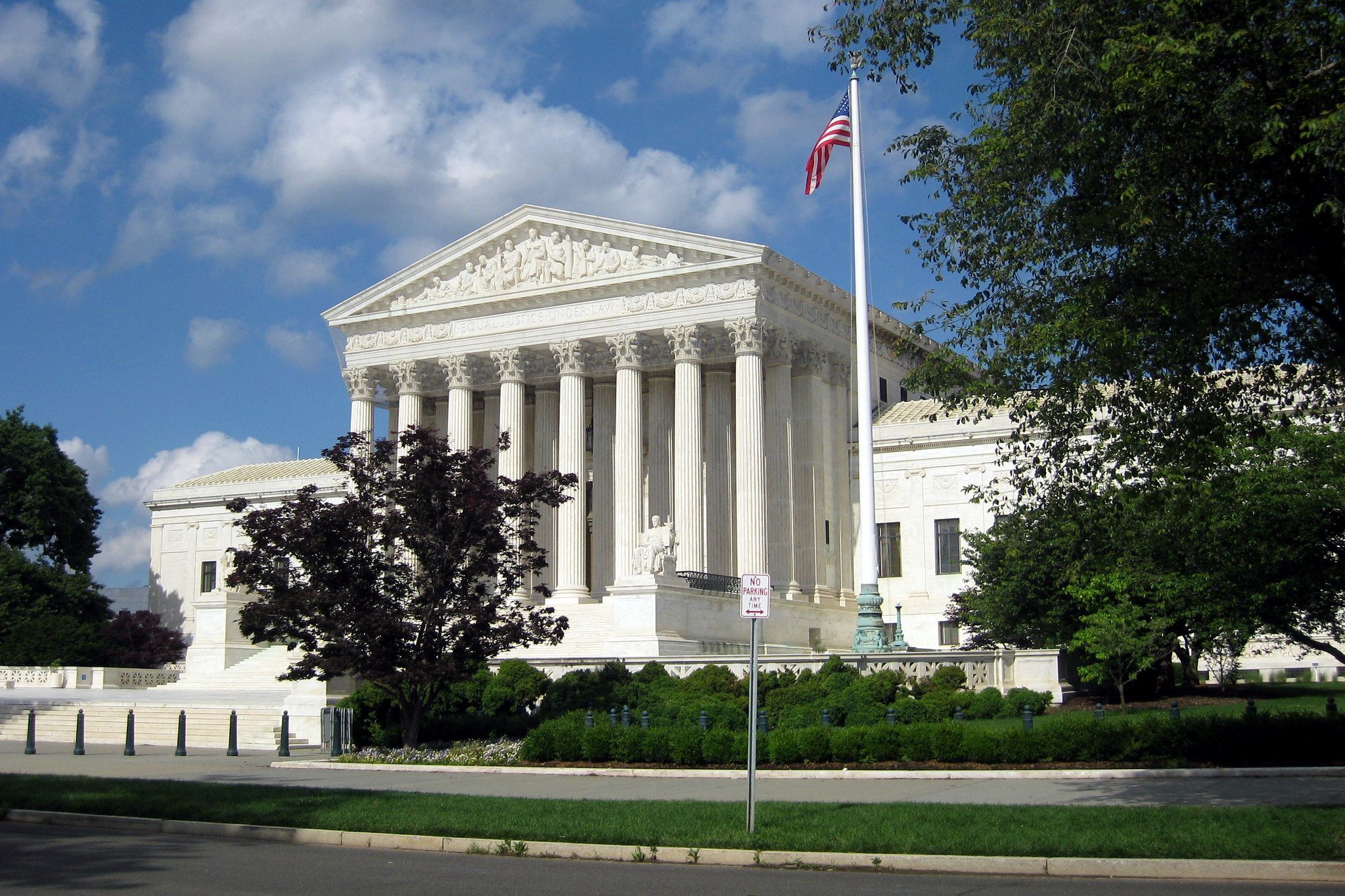In Pakistan, a Tale of Two Very Different Political Movements
Pakistan’s two newest political disrupters could not be more different. Here’s why that matters.

Published by The Lawfare Institute
in Cooperation With

The past few years have seen the emergence of two major new political movements in Pakistan—each of which holds important implications for understanding the country’s current state of play. One is the Pashtun Tahafuz Movement (PTM), a civil society group comprised mainly of ethnic Pashtuns—who live primarily in Pakistan’s tribal areas, Khyber Pakhtunkhwa and Balochistan provinces, and parts of the port city of Karachi. The other is Tehreek-e-Labbaik Pakistan (TLP), a religious political party. Each group is controversial in its own right but still draws power from a large and passionate support base. Indeed, while there are no reliable estimates of each group’s membership, both the PTM and TLP manage to attract thousands to their rallies. Yet, the views, experiences and likely trajectories of the two political movements could not be more different.
The story of each group says a lot about where society and the state stand in Pakistan today.
The PTM claims to want greater civil liberties for Pashtuns and seeks an end to extrajudicial killings and other human rights abuses in Pakistan’s tribal areas, where Pashtuns are the dominant ethnic group. The group first gained prominence in January 2018 after a police officer from the city of Karachi murdered Naqeebullah Mehsud, a Pashtun from Pakistan’s tribal areas, resulting in 10 days of PTM-led sit-in protests in Islamabad.
Since this incident, the Pakistani state’s response to the PTM has been harsh. Initially, the Pakistan government responded by arresting and placing travel restrictions on PTM leadership and supporters. On Dec. 1, 2018, PTM leaders and parliamentarians Ali Wazir and Mohsin Dawar were arrested by Pakistan’s Federal Investigation Agency while attempting to fly to Dubai. A few days later, on Dec. 5, 18 PTM members were arrested after attending a protest in Islamabad, Pakistan’s federal capital. And on Dec. 10, PTM leader Manzoor Pashteen made headlines when he was blocked from exiting the airport in the city of Quetta to meet with families of missing persons—a move the Balochistan provincial government justified with allegations of hate speech and incendiary statements made by Pashteen against Pakistan and its institutions.
Run-ins between the PTM and Pakistani authorities grew increasingly violent in 2019. At an April press conference, the Pakistani military spokesman, Maj. Gen. Asif Ghafoor, delivered a sinister warning to the PTM, stating, “[W]e want to do everything for the people [of tribal areas], but those who are playing in the hands of people, their time is up. Their time is up.” A month later, PTM leaders Dawar and Wazir led a protest near a military checkpoint in North Waziristan. What followed remains unclear, but at least 13 PTM protesters were killed while the Pakistani army reported one fatality. The military claimed self-defense from PTM-initiated gunfire, while the PTM labeled the tragedy an unprovoked massacre.
But the blows to the PTM didn’t end there. More recently, in May 2020, Ali Wazir’s brother Arif Wazir was gunned down in South Waziristan. And on Dec. 16, Ali Wazir was arrested in the city of Peshawar after being accused of “criminal conspiracy” and making “derogatory remarks against state institutions.”
While the PTM garners sympathy in the West and among some Pakistanis, the movement has failed overall to gain mass support in Pakistan. On the contrary, it attracts strong public criticism. Some PTM detractors paint the group as foreign-sponsored ethnonationalists with separatist ambitions; others accuse it of being linked to terrorist organizations in the tribal areas; and still others—likely because of its harsh criticism of Pakistan’s military—denounce PTM members as traitors to the nation.
The other group, Tehreek-e-Labbaik Pakistan, dates back further than the Pashtun Tahafuz Movement. TLP is a political party that embraces the Barelvi school of Islam—a subsect of Sunni Islam practiced by the majority of Pakistani Muslims—and defends Pakistan’s controversial blasphemy laws, which criminalize any act or statement that maligns Islam or the Prophet Muhammad but are often exploited by hardliners to target religious minorities or settle personal disputes. In 2018, on Lawfare, we explored the threat posed by TLP and assessed the Pakistan government’s strategy of prosecution to keep the party at bay.
TLP rose to prominence through its strong support for (and lionization of) Mumtaz Qadri, who assassinated Salman Taseer, the governor of Punjab, in 2011. Qadri attributed the attack to Taseer’s strong public opposition to the country’s blasphemy laws, which punish by death any visible representation, imputation, innuendo or insinuation that “defiles” the Prophet Muhammad (Qadri was convicted for the assasination and later executed by the state in 2016). Per the blasphemy laws, Ahmadis—a religious minority in Pakistan that experiences rampant discrimination—are prohibited from referring to their houses of worship as mosques or assigning to other figures certain epithets reserved for the Prophet Muhammad.
Like the PTM, TLP organizes mass protests and often gains the attention of Pakistani authorities, which can sometimes lead to violent clashes. In 2017, TLP’s predecessor, known as Tehreek-e-Labbaik Ya Rasool Allah (TLYR), brought the movement’s firebrand leader, Khadim Rizvi, into the national spotlight when his followers protested a change made to a religious oath that was part of the formal induction process for new Pakistani parliamentarians. This TLYR activism ultimately forced Pakistan’s law minister to resign. In 2018, TLP staged two weeks of protests over the acquittal of alleged blasphemer Asia Bibi and caused an estimated 226 million rupees ($1.6 million) in damage to public property. In these protests and others, TLP members called for blasphemers to be executed. Rizvi was arrested and charged with sedition as the government tried to legally crack down on TLP following the Bibi-related protest, but the leader was later released after Bibi was relocated to Canada. And most recently, TLP shut down Pakistan’s capital again in November 2020 to demand the expulsion of the French ambassador to Pakistan over anti-Islam cartoons that appeared in the French press.
Similar to the PTM’s leaders, Rizvi—who died suddenly after the November protests this year—used language and themes that were deeply offensive to many Pakistanis. He sparked outrage when he criticized the mass turnout for the funeral of philanthropist Abdul Sattar Edhi—one of the most widely loved figures in Pakistani history—claiming his orphanages were responsible for “16,000 illegitimate children.” Rizvi also lambasted the Jamaat-e-Islami (JI), a mainstream Islamist political party that has long worked across the Pakistani political spectrum. In one sermon, he equated JI with the Ahmadi sect, a deeply persecuted religious minority in Pakistan that many Pakistanis view as apostates.
And this controversial religious messaging didn’t end with Rizvi’s passing. After Rizvi’s death in November, prominent TLP figure Mufti Zahid Mahmood Madani referred to JI’s amir, Senator Siraj ul Haq, as “bad mazhab” or “poor mannered” (in this case implying he is misguided religiously) and implored party workers in a TLP WhatsApp group to reject his condolence message about Rizvi.
Despite these contentions, TLP has not experienced nearly the amount of backlash that the PTM has suffered the last three years. Rizvi’s brief arrest and conviction in 2018 was an exception, not the norm, in terms of how the state has responded to TLP. The state does not try to stop TLP protests, and it often gives in to the group’s demands. Tellingly, Rizvi’s funeral was attended by thousands, held at a national monument in Lahore known as Minar-e-Pakistan, and both the Pakistani prime minister and military expressed their condolences.
So what accounts for the difference in public reactions and state responses to the PTM and TLP—and why is that difference significant?
The main reason for this discrepancy is that TLP’s signature causes enjoy much more support countrywide than do the PTM’s. Support for the religious blasphemy laws, which are ingrained in Pakistan’s legal framework, has been a mainstream position among the Pakistani public for decades. Opposition to the laws exists but is limited at best. The country’s mainstream religious political parties—which represent both Deobandi and Barelvi Islam and include parties such as JI, Jamiat Ulema-e-Islam-Fazlur Rehman (JUI-F) and Jamiat Ulema-e-Pakistan (JUP)—are united in their support for these laws even as they criticize religious extremism. In 1953, the Barelvi cleric and JUP leader Maulana Shah Ahmed Noorani participated in JI-led anti-Ahmadi protests and was a key proponent of Pakistan’s blasphemy laws. Yet Noorani also supported the creation of Pakistan, served in parliament, was widely admired by a large political network and proved pivotal in creating consensus around the drafting of the 1973 constitution. Rizvi was able to mobilize Pakistanis in support of an absolutist interpretation of Pakistan’s blasphemy laws in ways that have never generated anything closely resembling mass pushback from the public.
The PTM, by contrast, calls for greater rights for Pashtuns—an ethnic community that faces considerable discrimination in parts of Pakistan. It also criticizes the Pakistani military in withering, even violent, fashion—a big no-no in a nation where the army is widely supported, and any strong, sustained public criticism of the institution is rare.
Indeed, the PTM’s rhetoric ranges from pleas for equal treatment for Pashtuns to outright contempt for the Pakistani state, and it adjusts the intensity of this rhetoric depending on the audience and the language used (whether English, Urdu or Pashto, the latter of which is the main language of Pashtuns). The PTM’s use of racially charged pejoratives like “Punjabi kala,” which means “Black Punjabi,” badly undermines the movement’s domestic reputation (Punjabis are the largest ethnic group in Pakistan, and most of the army’s senior officer classes are Punjabis). At the same time, Pashtuns have reached great heights in Pakistan’s military and hold senior positions in other parts of the government. Some of the PTM’s biggest critics are urban Pashtuns who do not claim to be marginalized by the state.
In the eyes of many Pakistanis, the PTM is characterized largely by its fervent berating of the country’s institutions. Videos circulated on social media have shown PTM leader Ali Wazir shouting, “I clearly say to the institution of the army that you better have mercy on yourselves because soon these people will drag your bodies in the streets and then hang them on street corners.” In another video, PTM leader Manzoor Pashteen delivers a message to Pakistani soldiers: “We urge the soldiers to disobey the generals … they will get you killed for their dirty games.” The PTM defends such statements as a last-ditch attempt to awaken the Pakistani state to growing discontent among Pashtuns and some other ethnic minorities about perceived marginalization, unfair targeting by security services and inequitable access to state resources. Given this contempt, which is not shared by the majority of Pakistanis, the PTM’s critics label the group as an unacceptable and treacherous threat.
Furthermore, the PTM’s mere identity as a movement that revolves around an ethnic group is problematic in Pakistan. Suspicion toward ethnic movements is baked into Pakistan’s political DNA. This is partly due to the secession of East Pakistan to form Bangladesh in 1971. This loss also elevated Punjab as Pakistan’s majority province (in terms of population), which transformed ethnic minorities in the less populated provinces of Sindh, Balochistan and the North-West Frontier into alienated minority enclaves living within larger minority provinces. Tensions between ethnic Sindhis and Urdu-speaking Mohajirs, who relocated from northern India after the partition, was a big reason Karachi came to be one of the world’s most violent cities for many years throughout the 1980s, 1990s, and 2000s.
Many states in post-partition India were divided by language, whereas Pakistan’s core provinces include large ethnolinguistic minorities. As one Pakistani scholar has explained, “In India, language was in but religion was out as a constitutional category. In Pakistan, religion was in but language was out because of its perceived potential for political destabilisation.” Ethnic minorities such as Seraiki speakers in southern Punjab sometimes call for new provinces, to little avail. Even renaming the Pashtun-dominated North-West Frontier province as “Khyber Pakhtunkhwa” some years back was fraught with controversy, and the initially proposed name of Pakhtunkhwa was fiercely opposed by the Hindko-speaking Hazara minority as too Pashtun oriented. The prime minister at the time, Nawaz Sharif, and his Pakistan Muslim League-Nawaz party, which is popular among Hazaras, successfully pushed to add “Khyber.”
Yet it is the political fault lines around ethnic Pashtuns who strongly support the PTM that arguably worry the Pakistani state the most. Afghanistan, Pakistan’s western neighbor, has never recognized its eastern border with Pakistan, known as the Durand Line. Pakistani officials have long feared the specter of Pashtun nationalism growing into a separatist movement, and of efforts—possibly sponsored by Afghanistan, where Pashtuns have been the country’s dominant ethnolinguistic group since the Afghan state was founded—to unite Pashtuns on both sides of the disputed border. While the PTM insists it fights only for the rights of Pashtuns in Pakistan, such assurances will not appease Pakistani officialdom. Public expressions of support for the PTM from prominent Afghan Pashtun figures, including from Afghan President Ashraf Ghani, have only intensified Pakistan’s suspicions (several top PTM leaders, in fact, attended Ghani’s presidential inauguration earlier this year).
Given this context, it is easy to see why a national Pashtun-led civil rights movement that invokes ethnonationalist identity politics is so controversial—and is feared and loathed by many—in Pakistan.
Another explanation to account for the differing experiences of the PTM and TLP in Pakistan is simple: The former is perceived as a greater threat by the powers that be. The PTM directs sharply worded criticism of the military, an institution that is not accustomed to such treatment. TLP, conversely, focuses its vitriol on religious minorities and alleged blasphemers. Its messaging rarely attacks the state directly. One of the few—but striking—exceptions, which led to the arrest and conviction of Rizvi and arrests of dozens of TLP members in 2018, was when the group called for Pakistani judges to be shot and for the army to mutiny after Bibi’s acquittal by the Supreme Court.
Furthermore, Pakistan always treats hardline Islamists with kid gloves, given the influence they wield over society and within the state as a religiously conservative nation. This has especially been the case since the 1980s, when the Pakistani military dictator Zia ul-Haq launched a policy of Islamization that empowered conservative religious figures and amplified their views across education, media and politics, among other spheres. The fact that Pakistani Prime Minister Imran Khan and the country’s military leadership both issued public condolences to Rizvi’s family so soon after his death illustrates the pull that TLP and its ilk have on the highest levels of Pakistan’s government—and the fears of the possible consequences (including, perhaps, the risk of retributive violent protests) had the state not offered that sign of respect.
TLP and the PTM may be two of the most prominent new political players in Pakistan, and they are both capable of staging large-scale mobilizations to focus on sensitive domestic Pakistani issues. But the similarities stop there—the two groups’ likely trajectories could not be more different. Judging from the state and public receptions to each, TLP is poised to become an entrenched part of politics and society in Pakistan, while the PTM will struggle to gain wider support and to stay out of the crosshairs of the state as it moves forward.
What does this mean for the future of Pakistan? Despite performing poorly at the polls, religious parties will continue to influence Pakistan’s laws and public life by building coalitions, allying with mainstream political parties and, when necessary, wielding influence from the streets. Many of these groups are happy to work within the framework of Pakistan’s constitution and view themselves as embracing democracy, albeit an illiberal version. Ethnic discontent will also continue to simmer but is unlikely to boil over into mass revolt or garner much sympathy outside a few liberal circles. And it is still key to remember that Pakistan’s ethnic and sectarian groups are not a monolith; in fact, there is fierce disagreement within those groups.
For the foreseeable future, Pakistan will remain a religiously conservative society and one that views ethnonationalist movements—regardless of their civil rights underpinnings—with suspicion. Unfortunately, this reality ensures that the rights and dignity of many members of religious and ethnic minority communities in Pakistan will remain elusive.






